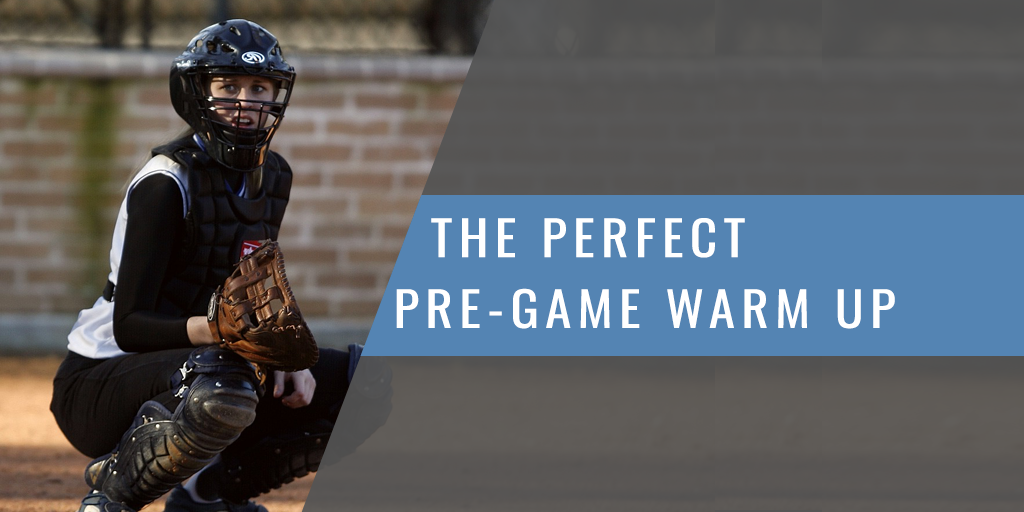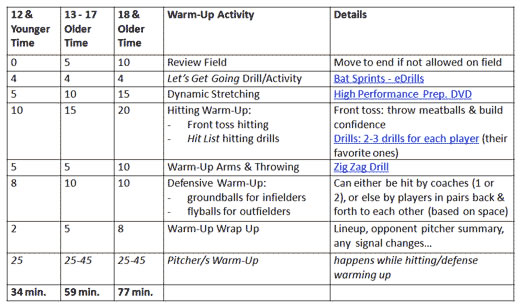| The Perfect Pre-Game Warm Up
By: Cindy Bristow Provided by: Softball Excellence.com
Everybody has to have a pre-game warm up, but not everyone has a good one. It seems like coaches are always looking for a better one, but what makes a good pre-game warm up? And how do you know if your warm up is good, no matter what age or level of team you coach? The biggest thing your pre-game should do is prepare your team for the game. While that sounds obvious nothing in that statement says it has to take a certain amount of time, or involve specific equipment or space, but only that it prepares your team for the upcoming game. Let's look at what needs to happen in order for your team to be prepared for the game:
How long these things take will vary based on factors such as the age of your team, the number of games you've played that same day and the stage in your season. Once you figure out a warmup that successfully gets your team ready to play then you'll want to stick to it and simply adapt it to the time & space you have that day. Very few teams have awesome facilities to use for warm ups (usually college teams), and even then there are times when college teams are in early season tournaments and need to do a travel team-type warm up. Space and Time are the 2 factors that will influence your pre-game warm ups the most so remember to be as creative as possible when it comes to these. Very few teams have awesome facilities to use for warm ups (usually college teams), and even then there are times when college teams are in early season tournaments and need to do a travel team-type warm up. Space and Time are the 2 factors that will influence your pre-game warm ups the most so remember to be as creative as possible when it comes to these.
Now let's look at a pre-game warm up that differs simply by the amount of time different age groups would do each category:
So depending on the age of your team, your pre-game warm up should take anywhere from 30 to 70 minutes. Warming up for 2 ½ hours not only seems extreme, but might be a sign of inefficiency. More isn't always better, and that's especially true when warming up for a game. Some final thoughts:
|








